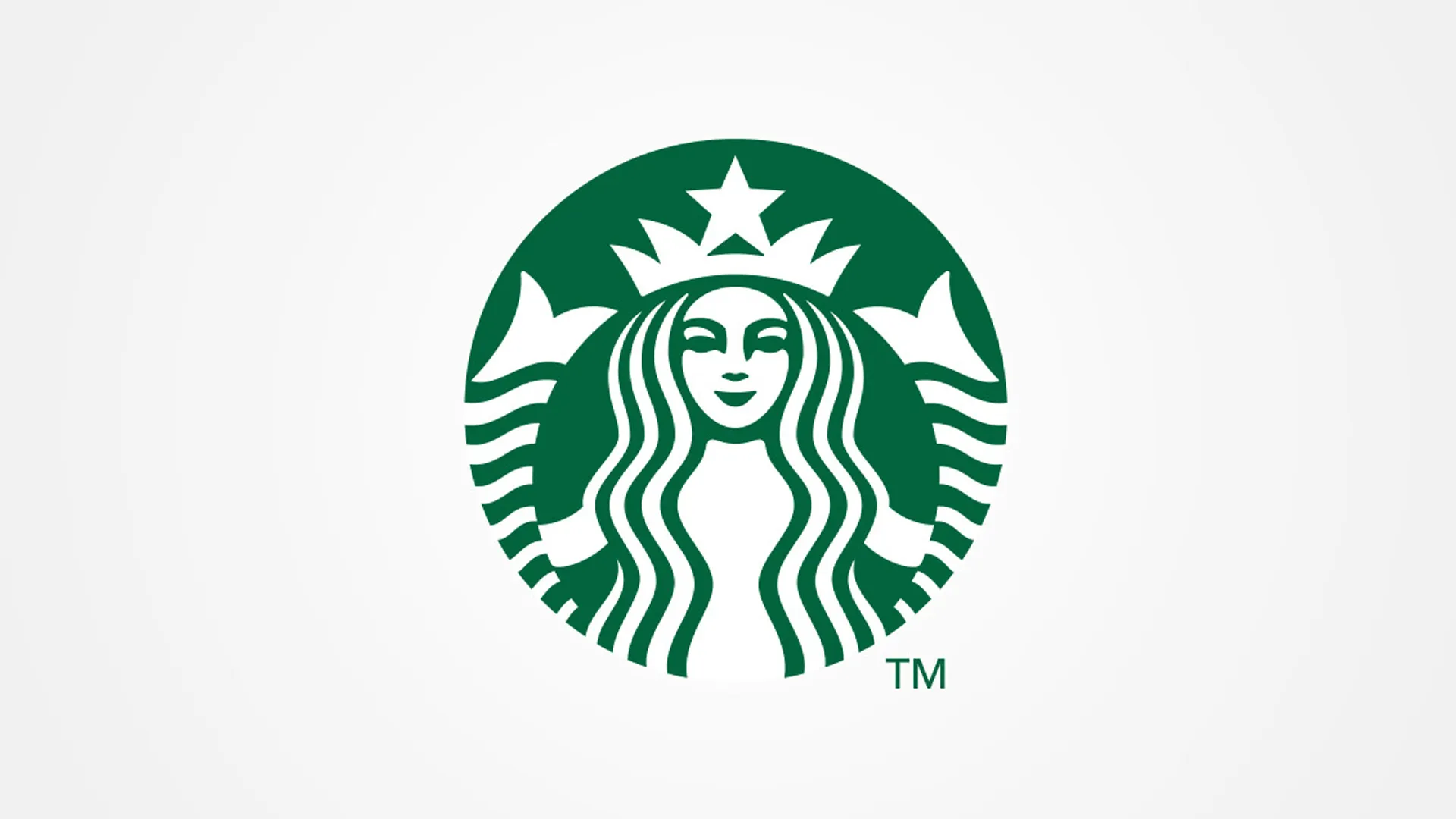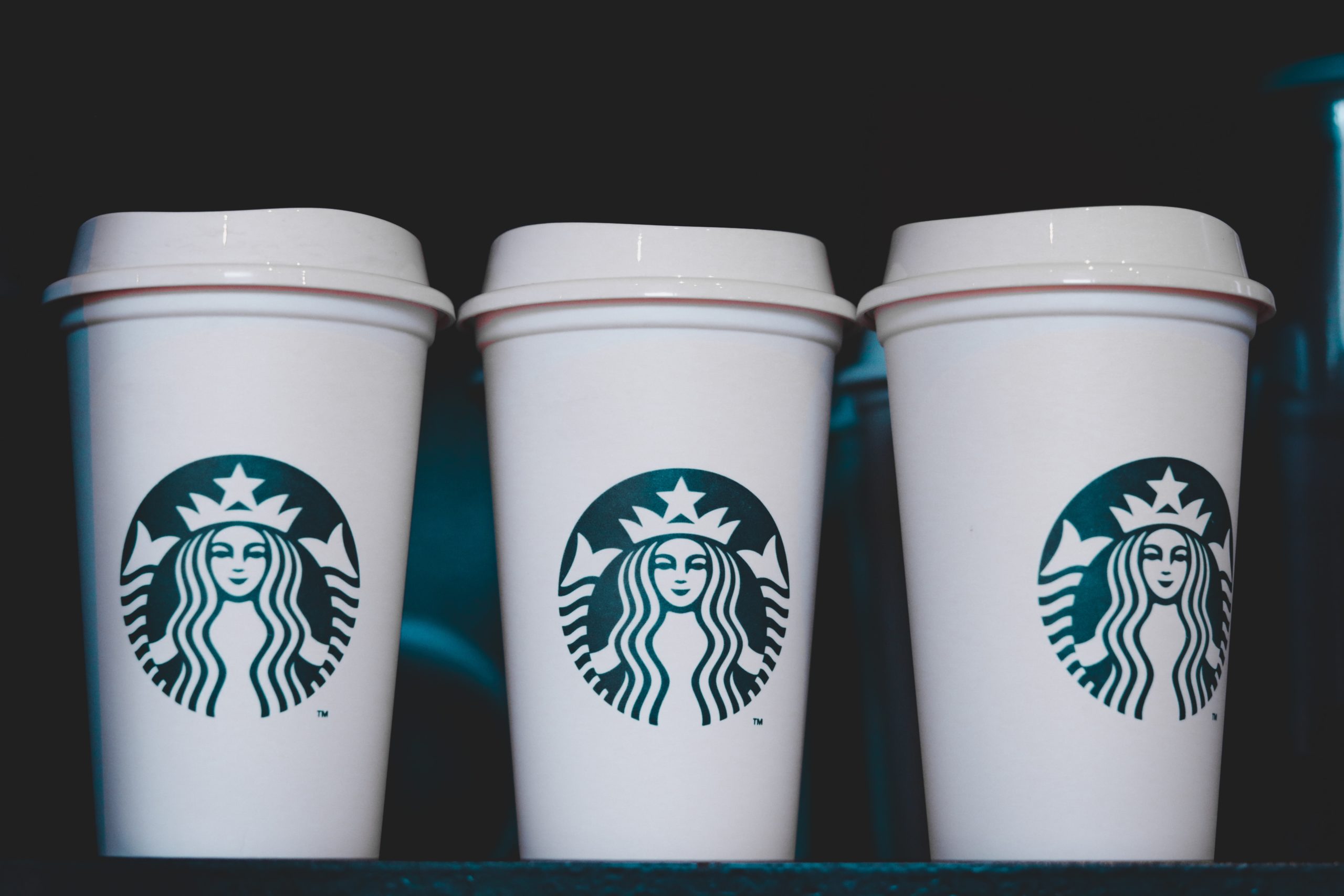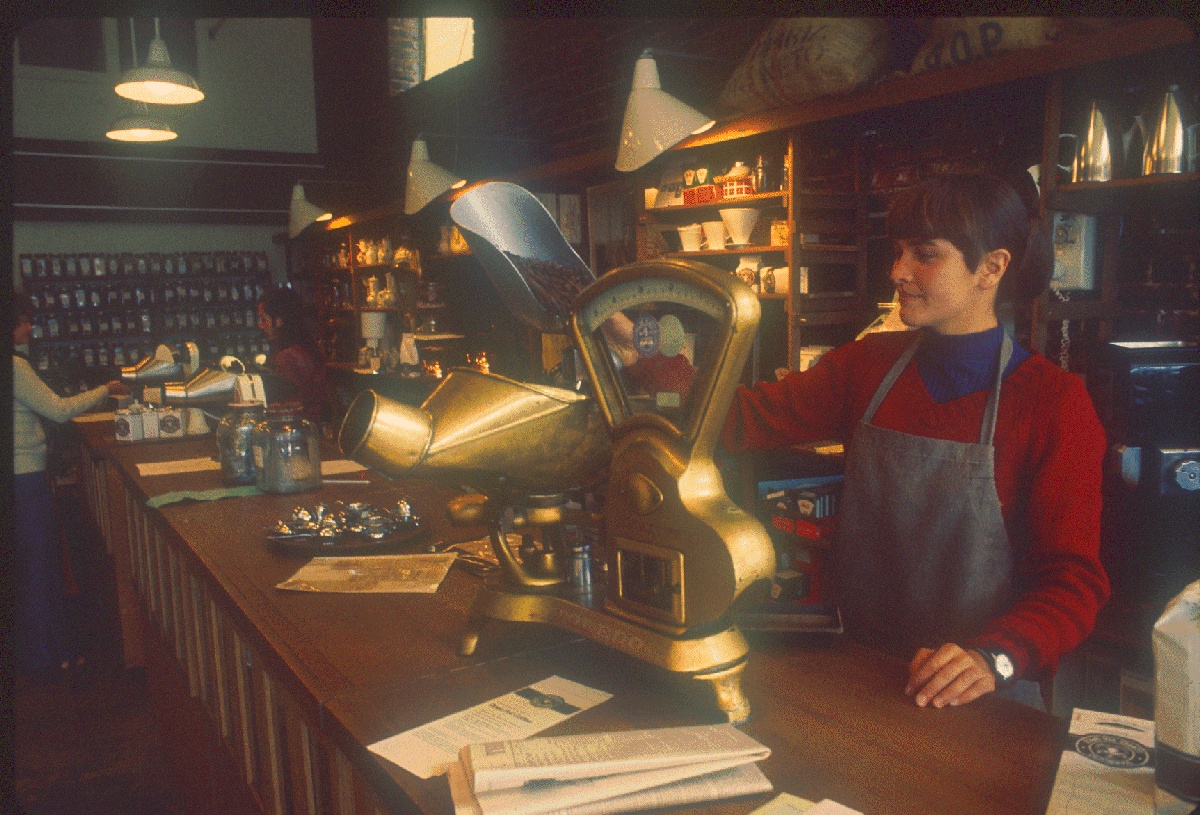SEPTEMBER 5, 2023
From Bean to Brand,
to Success #1
Starbucks: Coffee culture revolution & communities

GABRIEL SARTI

STARBUCKS’ LOGO
Coffee and Brand Narratives
If you had to spend a long time on a deserted island, what would you take with you? Your favorite book? Some music equipment? Pictures of your loved ones? Maybe all three at once, why not? Now, if you ask me, I’d bring my Italian coffee maker and a long supply of ground coffee to brew. Just like a billion other people around the world, the first thing I do when I wake up is make myself a good cup of coffee to help me navigate the day.
And, even though it may seem superficial, this beverage, which according to legend was discovered by chance by an Ethiopian shepherd named Kaldi in the 9th century AD, has evolved to become a crucial element in the daily life of anyone today. And with this evolution, different brands and different narratives have emerged to offer us different experiences through the same product.
That’s why, following in the footsteps of our last post where we analyzed what Brand Story and Brand Storytelling are (if you haven’t read it yet, click here), here, and in the next 2 posts, I will analyze 3 companies that, in such a competitive market as the coffee industry, have managed, from different perspectives and targeting different audiences, to build significant narratives around them, ultimately becoming successful brands:
Starbucks, the brand that originated in Seattle and expanded worldwide, transcending the mere cup of coffee to become a space for community and connection; Nespresso, with its Swiss origins, has turned coffee-making into a precision art for the most sophisticated palates; and finally, Black Rifle Coffee Company, made by and for veterans, adding a patriotic and robust touch, something quite novel in the coffee universe. So, before we dive deep into the analysis, fix yourself a nice cup (a bit of milk and 2 sugar spoons), because today, at The Brand Cuisine, we’re talking about coffee, and more specifically, about Starbucks.

STARBUCKS’ FLAGSHIP PRODUCT
Starbucks: The Origin of a Brand
With presence in 80 countries and over 35,000 locations worldwide, Starbucks is undoubtedly a «Giant» in the coffee market. While it’s undeniable that their products, which go far beyond this beverage, are particularly tasty, the central question in this analysis remains: how did a company that started as a small venture by three friends in the city of Seattle in 1971 manage to become the global empire it is today?
In order to answer this question, we must first delve into the history that gave rise to this brand. In the late 1960s and early 1970s, many Americans felt that their coffee consumption experience was rather poor; they believed there were very few options available in the market, and all of them were of very low quality. Furthermore, due to the cultural changes of that time, the public began to show a growing interest in the health and sustainability of the food they consumed.
In this context, three friends from the city of Seattle, Gordon Bowker, Jerry Baldwin, and Zev Siegl, decided to open a boutique store (the first Starbucks in history) where they would sell, to the general public, among other things, high-quality coffee beans, freshly roasted and ground. Although it may seem strange to us today, this initial Starbucks didn’t sell any kind of beverages, not even a cup of coffee. The coffee culture in the United States was focused on home and workplace consumption at that time, so coffee shops and the act of going to an establishment solely for coffee were not common. (It’s worth noting that people did drink coffee in establishments, but it was typically in restaurants or diners, as a concluding part of a meal).
Starbucks’ business model wouldn’t begin to take shape until 1983 when Howard Schultz, who initially worked as Director of Operations and Marketing and later would end up buying the brand, traveled to the Italian city of Milan. There, Schultz discovered a coffee culture radically different from what he was accustomed to in the United States. It wasn’t just the fact that the city was filled with small cafes; these establishments offered much more than a simple beverage for energizing oneself. They served a social role, a kind of modern «agora» where family, friends, and acquaintances gathered to talk , debate, discuss, connect, and simply share moments.

STARBUCKS’ STORE 1977
Coffee and Community: The Essence of Success
With this in mind, Schultz would forever transform the very essence of Starbucks, transitioning from being a mere retailer of quality roasted and ground coffee to becoming a gathering place, accompanied by the finest and most delicious beverages on the market (teas, coffees, shakes, etc.), while initiating a revolution in coffee culture in the United States that continues to this day.
Having said all this, and returning to the initial question, we can assertively state that Starbucks’ success is not found in its coffee or the beans it uses—not even in how tasty or not their croissants or cupcakes may be, which, of course, have their impact. No, the success of this brand lies in their ability to sell, and quite successfully at that, something much more valuable to today’s consumers than a cup of coffee: Starbucks sells, above all else, an experience. In a world where frenzy is the order of the day, and where we all find ourselves increasingly atomized, Starbucks presents itself as a kind of «oasis,» a «refuge» amidst this whirlwind, where clocks no longer tyrannically control our lives, and where we can afford the time to connect, not only with our loved ones but also with our community.
This is the raison d’être and the driving force behind Starbucks’ success. If one pays close attention, one will realize that all the actions undertaken by this brand are centered around two simultaneous objectives. The first one is to make these “oases” or “refuges”, as comfortable as possible through careful selection and arrangement of furniture, meticulous music selection to create a warm and welcoming ambiance, and the use of the aroma of freshly roasted coffee (even though they no longer roast coffee in their stores) to give customers the feeling that they are in an establishment offering ‘homemade’ products, among other elements. The second one is to emphasize the idea of Starbucks as a creator and enhancer of communities through its ‘open doors’ policy, where anyone who enters one of its locations, whether they make a purchase or not, is considered a ‘customer.’ Starbucks’ hiring policy aims to promote inclusion and diversity among its employees, and its collaboration programs with coffee farming communities, such as C.A.F.E. Practices or Granos de Esperanza, allow them to continue working on their original concept of a company dedicated to health and environmental care, and more.
Although many aspects of brand development have evolved from its inception to the present, it is indisputable that Starbucks has successfully presented an appealing and innovative proposition, not only to the U.S. audience but globally, enabling it to become the «Coffee Giant» it is today.
STARBUCKS’ “GRANOS DE ESPERANZA” AD
SEPTEMBER 5, 2023
From Bean to Brand,
to Success #1
Starbucks: Coffee culture revolution & communities

GABRIEL SARTI

STARBUCKS’ LOGO
Coffee and Brand Narratives
If you had to spend a long time on a deserted island, what would you take with you? Your favorite book? Some music equipment? Pictures of your loved ones? Maybe all three at once, why not? Now, if you ask me, I’d bring my Italian coffee maker and a long supply of ground coffee to brew. Just like a billion other people around the world, the first thing I do when I wake up is make myself a good cup of coffee to help me navigate the day.
And, even though it may seem superficial, this beverage, which according to legend was discovered by chance by an Ethiopian shepherd named Kaldi in the 9th century AD, has evolved to become a crucial element in the daily life of anyone today. And with this evolution, different brands and different narratives have emerged to offer us different experiences through the same product.
That’s why, following in the footsteps of our last post where we analyzed what Brand Story and Brand Storytelling are (if you haven’t read it yet, click here), here, and in the next 2 posts, I will analyze 3 companies that, in such a competitive market as the coffee industry, have managed, from different perspectives and targeting different audiences, to build significant narratives around them, ultimately becoming successful brands:
Starbucks, the brand that originated in Seattle and expanded worldwide, transcending the mere cup of coffee to become a space for community and connection; Nespresso, with its Swiss origins, has turned coffee-making into a precision art for the most sophisticated palates; and finally, Black Rifle Coffee Company, made by and for veterans, adding a patriotic and robust touch, something quite novel in the coffee universe. So, before we dive deep into the analysis, fix yourself a nice cup (a bit of milk and 2 sugar spoons), because today, at The Brand Cuisine, we’re talking about coffee, and more specifically, about Starbucks.

STARBUCKS’ FLAGSHIP PRODUCT
Starbucks: The Origin of a Brand
With presence in 80 countries and over 35,000 locations worldwide, Starbucks is undoubtedly a «Giant» in the coffee market. While it’s undeniable that their products, which go far beyond this beverage, are particularly tasty, the central question in this analysis remains: how did a company that started as a small venture by three friends in the city of Seattle in 1971 manage to become the global empire it is today?
In order to answer this question, we must first delve into the history that gave rise to this brand. In the late 1960s and early 1970s, many Americans felt that their coffee consumption experience was rather poor; they believed there were very few options available in the market, and all of them were of very low quality. Furthermore, due to the cultural changes of that time, the public began to show a growing interest in the health and sustainability of the food they consumed.
In this context, three friends from the city of Seattle, Gordon Bowker, Jerry Baldwin, and Zev Siegl, decided to open a boutique store (the first Starbucks in history) where they would sell, to the general public, among other things, high-quality coffee beans, freshly roasted and ground. Although it may seem strange to us today, this initial Starbucks didn’t sell any kind of beverages, not even a cup of coffee. The coffee culture in the United States was focused on home and workplace consumption at that time, so coffee shops and the act of going to an establishment solely for coffee were not common. (It’s worth noting that people did drink coffee in establishments, but it was typically in restaurants or diners, as a concluding part of a meal).
Starbucks’ business model wouldn’t begin to take shape until 1983 when Howard Schultz, who initially worked as Director of Operations and Marketing and later would end up buying the brand, traveled to the Italian city of Milan. There, Schultz discovered a coffee culture radically different from what he was accustomed to in the United States. It wasn’t just the fact that the city was filled with small cafes; these establishments offered much more than a simple beverage for energizing oneself. They served a social role, a kind of modern «agora» where family, friends, and acquaintances gathered to talk , debate, discuss, connect, and simply share moments.

STARBUCKS’ STORE 1977
Coffee and Community: The Essence of Success
With this in mind, Schultz would forever transform the very essence of Starbucks, transitioning from being a mere retailer of quality roasted and ground coffee to becoming a gathering place, accompanied by the finest and most delicious beverages on the market (teas, coffees, shakes, etc.), while initiating a revolution in coffee culture in the United States that continues to this day.
Having said all this, and returning to the initial question, we can assertively state that Starbucks’ success is not found in its coffee or the beans it uses—not even in how tasty or not their croissants or cupcakes may be, which, of course, have their impact. No, the success of this brand lies in their ability to sell, and quite successfully at that, something much more valuable to today’s consumers than a cup of coffee: Starbucks sells, above all else, an experience. In a world where frenzy is the order of the day, and where we all find ourselves increasingly atomized, Starbucks presents itself as a kind of «oasis,» a «refuge» amidst this whirlwind, where clocks no longer tyrannically control our lives, and where we can afford the time to connect, not only with our loved ones but also with our community.
This is the raison d’être and the driving force behind Starbucks’ success. If one pays close attention, one will realize that all the actions undertaken by this brand are centered around two simultaneous objectives. The first one is to make these “oases” or “refuges”, as comfortable as possible through careful selection and arrangement of furniture, meticulous music selection to create a warm and welcoming ambiance, and the use of the aroma of freshly roasted coffee (even though they no longer roast coffee in their stores) to give customers the feeling that they are in an establishment offering ‘homemade’ products, among other elements. The second one is to emphasize the idea of Starbucks as a creator and enhancer of communities through its ‘open doors’ policy, where anyone who enters one of its locations, whether they make a purchase or not, is considered a ‘customer.’ Starbucks’ hiring policy aims to promote inclusion and diversity among its employees, and its collaboration programs with coffee farming communities, such as C.A.F.E. Practices or Granos de Esperanza, allow them to continue working on their original concept of a company dedicated to health and environmental care, and more.
Although many aspects of brand development have evolved from its inception to the present, it is indisputable that Starbucks has successfully presented an appealing and innovative proposition, not only to the U.S. audience but globally, enabling it to become the «Coffee Giant» it is today.
STARBUCKS’ “GRANOS DE ESPERANZA” AD
SEPTEMBER 5, 2023
From Bean to Brand,to Success #1
Starbucks: Coffee culture revolution & communities

GABRIEL SARTI

STARBUCKS’ LOGO
Coffee and Brand Narratives
If you had to spend a long time on a deserted island, what would you take with you? Your favorite book? Some music equipment? Pictures of your loved ones? Maybe all three at once, why not? Now, if you ask me, I’d bring my Italian coffee maker and a long supply of ground coffee to brew. Just like a billion other people around the world, the first thing I do when I wake up is make myself a good cup of coffee to help me navigate the day.
And, even though it may seem superficial, this beverage, which according to legend was discovered by chance by an Ethiopian shepherd named Kaldi in the 9th century AD, has evolved to become a crucial element in the daily life of anyone today. And with this evolution, different brands and different narratives have emerged to offer us different experiences through the same product.
That’s why, following in the footsteps of our last post where we analyzed what Brand Story and Brand Storytelling are (if you haven’t read it yet, click here), here, and in the next 2 posts, I will analyze 3 companies that, in such a competitive market as the coffee industry, have managed, from different perspectives and targeting different audiences, to build significant narratives around them, ultimately becoming successful brands:
Starbucks, the brand that originated in Seattle and expanded worldwide, transcending the mere cup of coffee to become a space for community and connection; Nespresso, with its Swiss origins, has turned coffee-making into a precision art for the most sophisticated palates; and finally, Black Rifle Coffee Company, made by and for veterans, adding a patriotic and robust touch, something quite novel in the coffee universe. So, before we dive deep into the analysis, fix yourself a nice cup (a bit of milk and 2 sugar spoons), because today, at The Brand Cuisine, we’re talking about coffee, and more specifically, about Starbucks.

STARBUCKS’ FLAGSHIP PRODUCT
Starbucks: The Origin of a Brand
With presence in 80 countries and over 35,000 locations worldwide, Starbucks is undoubtedly a «Giant» in the coffee market. While it’s undeniable that their products, which go far beyond this beverage, are particularly tasty, the central question in this analysis remains: how did a company that started as a small venture by three friends in the city of Seattle in 1971 manage to become the global empire it is today?
In order to answer this question, we must first delve into the history that gave rise to this brand. In the late 1960s and early 1970s, many Americans felt that their coffee consumption experience was rather poor; they believed there were very few options available in the market, and all of them were of very low quality. Furthermore, due to the cultural changes of that time, the public began to show a growing interest in the health and sustainability of the food they consumed.
In this context, three friends from the city of Seattle, Gordon Bowker, Jerry Baldwin, and Zev Siegl, decided to open a boutique store (the first Starbucks in history) where they would sell, to the general public, among other things, high-quality coffee beans, freshly roasted and ground. Although it may seem strange to us today, this initial Starbucks didn’t sell any kind of beverages, not even a cup of coffee. The coffee culture in the United States was focused on home and workplace consumption at that time, so coffee shops and the act of going to an establishment solely for coffee were not common. (It’s worth noting that people did drink coffee in establishments, but it was typically in restaurants or diners, as a concluding part of a meal).
Starbucks’ business model wouldn’t begin to take shape until 1983 when Howard Schultz, who initially worked as Director of Operations and Marketing and later would end up buying the brand, traveled to the Italian city of Milan. There, Schultz discovered a coffee culture radically different from what he was accustomed to in the United States. It wasn’t just the fact that the city was filled with small cafes; these establishments offered much more than a simple beverage for energizing oneself. They served a social role, a kind of modern «agora» where family, friends, and acquaintances gathered to talk , debate, discuss, connect, and simply share moments.

STARBUCKS’ STORE 1977
Coffee and Community: The Essence of Success
With this in mind, Schultz would forever transform the very essence of Starbucks, transitioning from being a mere retailer of quality roasted and ground coffee to becoming a gathering place, accompanied by the finest and most delicious beverages on the market (teas, coffees, shakes, etc.), while initiating a revolution in coffee culture in the United States that continues to this day.
Having said all this, and returning to the initial question, we can assertively state that Starbucks’ success is not found in its coffee or the beans it uses—not even in how tasty or not their croissants or cupcakes may be, which, of course, have their impact. No, the success of this brand lies in their ability to sell, and quite successfully at that, something much more valuable to today’s consumers than a cup of coffee: Starbucks sells, above all else, an experience. In a world where frenzy is the order of the day, and where we all find ourselves increasingly atomized, Starbucks presents itself as a kind of «oasis,» a «refuge» amidst this whirlwind, where clocks no longer tyrannically control our lives, and where we can afford the time to connect, not only with our loved ones but also with our community.
This is the raison d’être and the driving force behind Starbucks’ success. If one pays close attention, one will realize that all the actions undertaken by this brand are centered around two simultaneous objectives. The first one is to make these “oases” or “refuges”, as comfortable as possible through careful selection and arrangement of furniture, meticulous music selection to create a warm and welcoming ambiance, and the use of the aroma of freshly roasted coffee (even though they no longer roast coffee in their stores) to give customers the feeling that they are in an establishment offering ‘homemade’ products, among other elements. The second one is to emphasize the idea of Starbucks as a creator and enhancer of communities through its ‘open doors’ policy, where anyone who enters one of its locations, whether they make a purchase or not, is considered a ‘customer.’ Starbucks’ hiring policy aims to promote inclusion and diversity among its employees, and its collaboration programs with coffee farming communities, such as C.A.F.E. Practices or Granos de Esperanza, allow them to continue working on their original concept of a company dedicated to health and environmental care, and more.
Although many aspects of brand development have evolved from its inception to the present, it is indisputable that Starbucks has successfully presented an appealing and innovative proposition, not only to the U.S. audience but globally, enabling it to become the «Coffee Giant» it is today.
STARBUCKS’ “GRANOS DE ESPERANZA” AD

